Related Research Articles

Pinturicchio, or Pintoricchio, also known as Benetto di Biagio or Sordicchio, was an Italian Renaissance painter. He acquired his nickname because of his small stature and he used it to sign some of his artworks that were created during the fifteenth and sixteenth centuries.
The term vernacular photography is used in several related senses. Each is in one way or another meant to contrast with received notions of fine-art photography. Vernacular photography is also distinct from both found photography and amateur photography. The term originated among academics and curators, but has moved into wider usage.
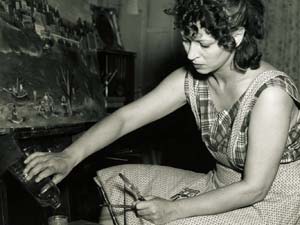
Doris Emrick Lee was an American painter known for her figurative painting and printmaking. She won the Logan Medal of the Arts from the Chicago Art Institute in 1935. She is known as one of the most successful female artists of the Depression era in the United States.
Alison Saar is a Los Angeles, California based sculptor, mixed-media, and installation artist. Her artwork focuses on the African diaspora and black female identity and is influenced by African, Caribbean, and Latin American folk art and spirituality. Saar is well known for "transforming found objects to reflect themes of cultural and social identity, history, and religion." Saar credits her parents, collagist and assemblage artist Betye Saar and painter and art conservator Richard Saar, for her early exposure to are and to these metaphysical and spiritual practices. Saar followed in her parents footsteps along with her sisters, Lezley Saar and Tracye Saar-Cavanaugh who are also artists. Saar has been a practicing artist for many years, exhibiting in galleries around the world as well as installing public art works in New York City. She has received achievement awards from institutions including the New York City Art Commission as well as the Institute of Contemporary Art in Boston.
Richard Misrach is an American photographer. He has photographed the deserts of the American West, and pursued projects that document the changes in the natural environment that have been wrought by various man-made factors such as urban sprawl, tourism, industrialization, floods, fires, petrochemical manufacturing, and the testing of explosives and nuclear weapons by the military. Curator Anne Wilkes Tucker writes that Misrach's practice has been "driven [by] issues of aesthetics, politics, ecology, and sociology." In a 2011 interview, Misrach noted: "My career, in a way, has been about navigating these two extremes - the political and the aesthetic."
Marion M. Bass, known as Pinky Bass or Pinky/MM Bass, is an American photographer, known for her work in pinhole photography.
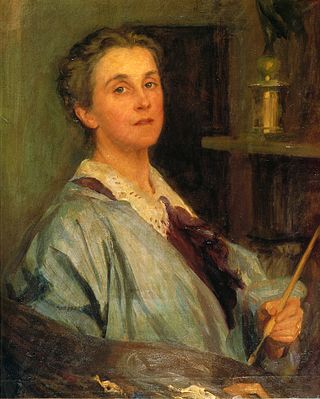
Lydia Field Emmet was an American artist best known for her work as a portraitist. She studied with, among others, prominent artists such as William Merritt Chase, Harry Siddons Mowbray, Kenyon Cox and Tony Robert-Fleury. Emmet exhibited widely during her career, and her paintings can now be found hanging in the White House, and many prestigious art galleries, including the Metropolitan Museum of Art.

Susan Hiller was a US-born, British conceptual artist who lived in London, United Kingdom. Her practice spanned a broad range of media including installation, video, photography, painting, sculpture, performance, artist's books and writing. A key figure in British art across four decades, she was best known for her innovative large-scale multimedia installations, and for works that took as their subject matter aspects of culture that were overlooked, marginalised, or disregarded, including paranormal beliefs – an approach which she referred to as "paraconceptualism".
Hanna Jubran is a Palestinian Arab Israeli sculptor, born in Jish, the upper Galilee. His work addresses the concepts of time, movement, balance and space. Each sculpture occupies and creates its own reality influenced by its immediate surroundings. The work does not rely on one media to evoke the intended response, but takes advantage of compatible materials such as, wood, granite, steel, iron and bronze.

Prentiss Taylor was an American illustrator, lithographer, and painter. Born in Washington D.C., Taylor began his art studies at the Corcoran Gallery of Art, followed by painting classes under Charles Hawthorne in Provincetown, Massachusetts, and training at the Art Students League in New York City. In 1931, Taylor began studying lithography at the League. He became a member of one of the most important printmaking societies in America at that time, the Society of American Graphic Artists. Taylor interacted and collaborated with many writers and musicians in his time in New York in the late 1920s and early 30s. This was in the emergence of the Harlem Renaissance. Among his close friends and colleagues were Langston Hughes and Carl Van Vechten.
Gary Lee Noffke is an American artist and metalsmith. Known for versatility and originality, he is a blacksmith, coppersmith, silversmith, goldsmith, and toolmaker. He has produced gold and silver hollowware, cutlery, jewelry, and forged steelware. Noffke is noted for his technical versatility, his pioneering research into hot forging, the introduction of new alloys, and his ability to both build on and challenge traditional techniques. He has been called the metalsmith's metalsmith, a pacesetter, and a maverick. He is also an educator who has mentored an entire generation of metalsmiths. He has received numerous awards and honors. He has exhibited internationally, and his work is represented in collections around the world.

Johannes Adam Simon Oertel was a German-American Episcopal clergyman and artist.
Matthew Clay Baumgardner was an American contemporary artist and National Endowment for the Arts Visual Artist Fellow, whose work was featured in multiple public and private collections including the Gibbes Museum of Art and the Greenville Museum of Art in Greenville, SC. After graduating with a master of fine arts degree from the University of North Carolina at Chapel Hill in 1982, he was involved for over three decades in New York City's art scene.
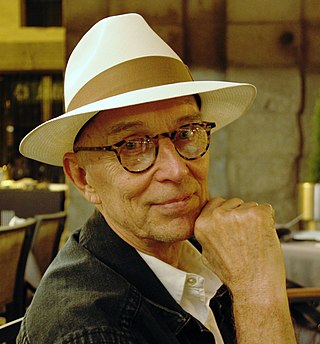
Burk Uzzle is an American photojournalist, previously member of Magnum Photos and president from 1979 to 1980.
Harriet Bogart was an American painter and teacher.
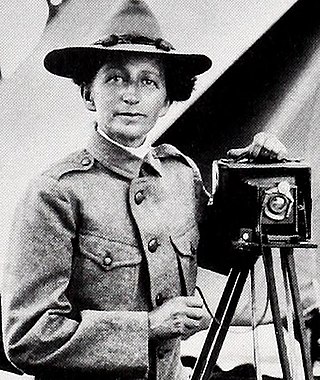
Mary Bayard Morgan Wootten (1875–1959) was an American photographer. She named Pepsi Cola and created its logo for her neighbor Caleb Bradham, who invented the drink. Wootten was the first woman in the National Guard. She opened six photographic studios,and raised two children after her husband left her for the Gold rush. The Wootten-Moulton museum will be opening in New Bern North Carolina soon in an historic home on East Front Street by Anthony Lilly and Ashley Norman. https://nyti.ms/2FrDvgB
Mary Harvey Tannahill was an American painter, printmaker, embroiderer and batik maker. She studied in the United States and Europe and spent 30 summers in Provincetown, Massachusetts, with the artist colony there. She was instructed by Blanche Lazzell there and assumed the style of the Provincetown Printers. She exhibited her works through a number of artist organizations. A native of North Carolina, she spent much of her career based in New York.
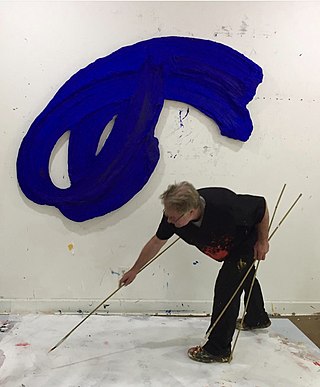
Donald Martiny is an American artist. His abstract paintings are related to both action painting and Abstract expressionism.

Sarah Jane Blakeslee was an American landscape and portrait painter.
Bill Bamberger Jr. is an American documentary photographer, photojournalist, and author who captures social and cultural issues in America and around the world. Bamberger has been called a "master documentarian" and is known for "taking an intimate approach to his subject matter". His work has been featured in several books and in solo exhibits at the Smithsonian Institution's National Museum of American History, the North Carolina Museum of Art, and the National Building Museum. He is a lecturing fellow at the Center for Documentary Studies at Duke University.
References
- ↑ East, West, Union Works Galleries: Boulder Museum of Contemporary Art. Gallery Guide (2003). Susan Page folder. North Carolina Women Artists Archive. Sloane Art Library, University of North Carolina at Chapel Hill.
- ↑ Borderlands: Evidence from the Rio Grande. Raleigh, NC: Gregg Museum of Art & Design. 2019. p. 8. ISBN 978-1-7329915-0-7.
- ↑ The Border Project: New works by Susan Harbage Page (PDF). Flanders Gallery. Retrieved March 4, 2019.
- ↑ "Zone of Contention: the U.S. / Mexico Border. June 16 – September 2, 2012. Weatherspoon Art Museum, The University of North Carolina at Greensboro. Susan Harbage Page folder. North Carolina Women Artists Archive. Sloane Art Library, University of North Carolina at Chapel Hill.
- ↑ "Residues of Border Control". southernspaces.org. Retrieved March 5, 2016.
- ↑ Exhibition postcard. Susan Harbage Page folder. North Carolina Women Artists Archive. Sloane Art Library, University of North Carolina at Chapel Hill